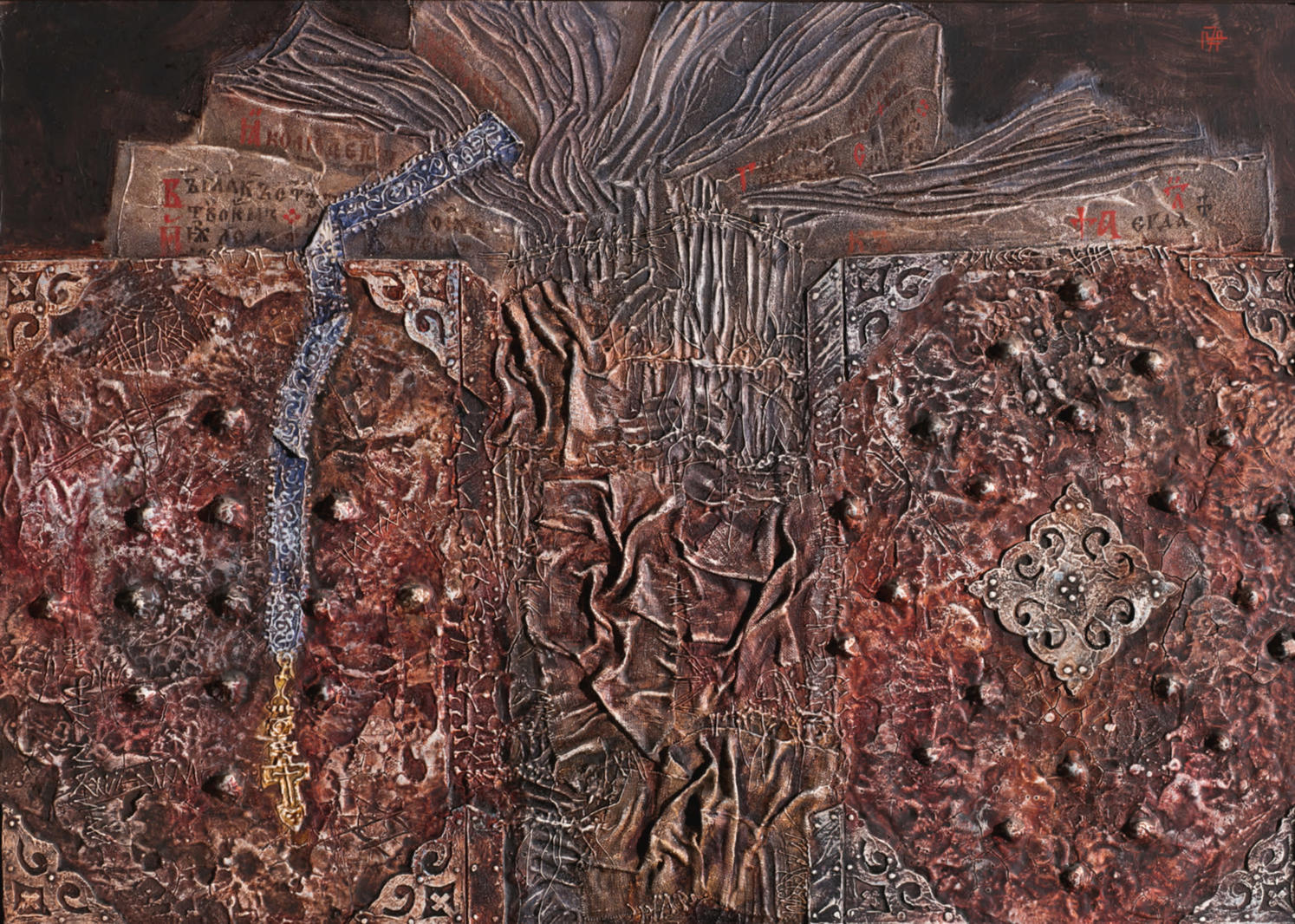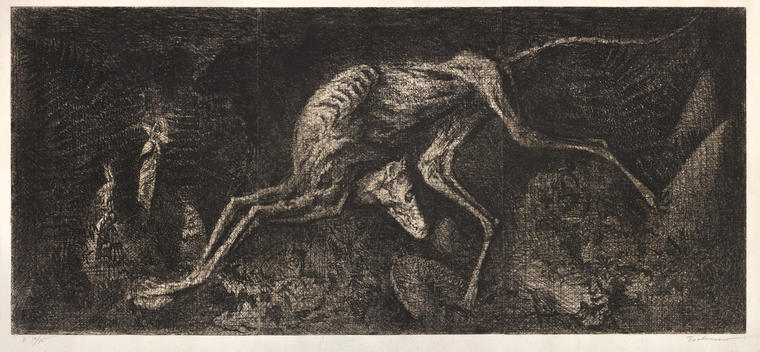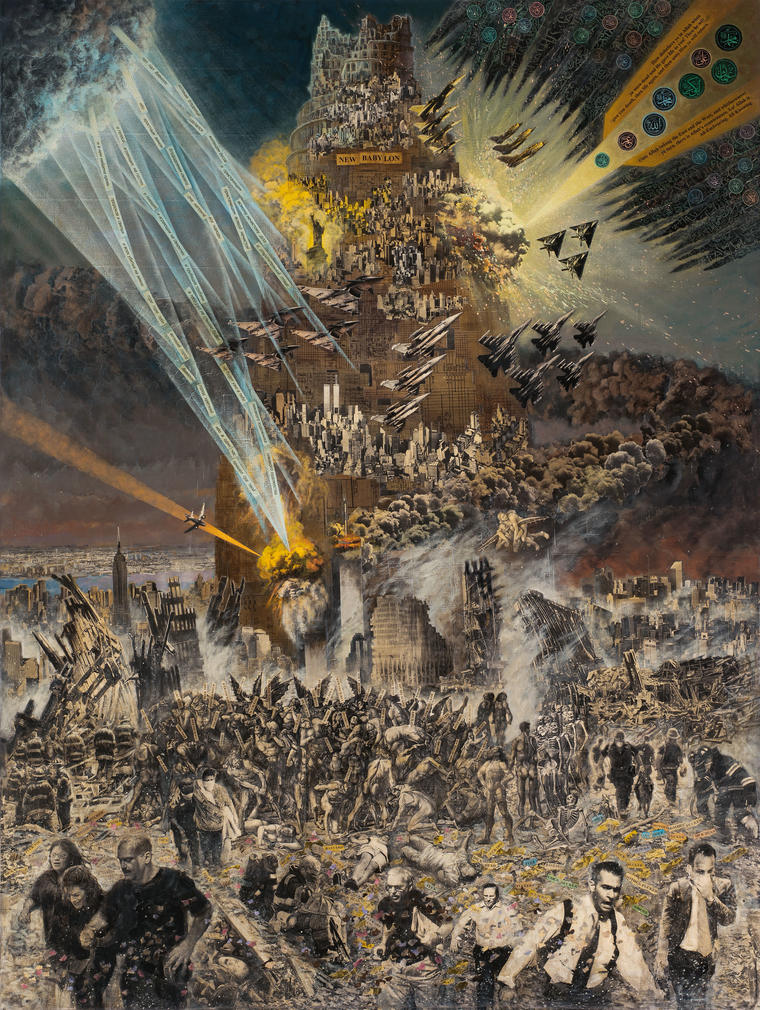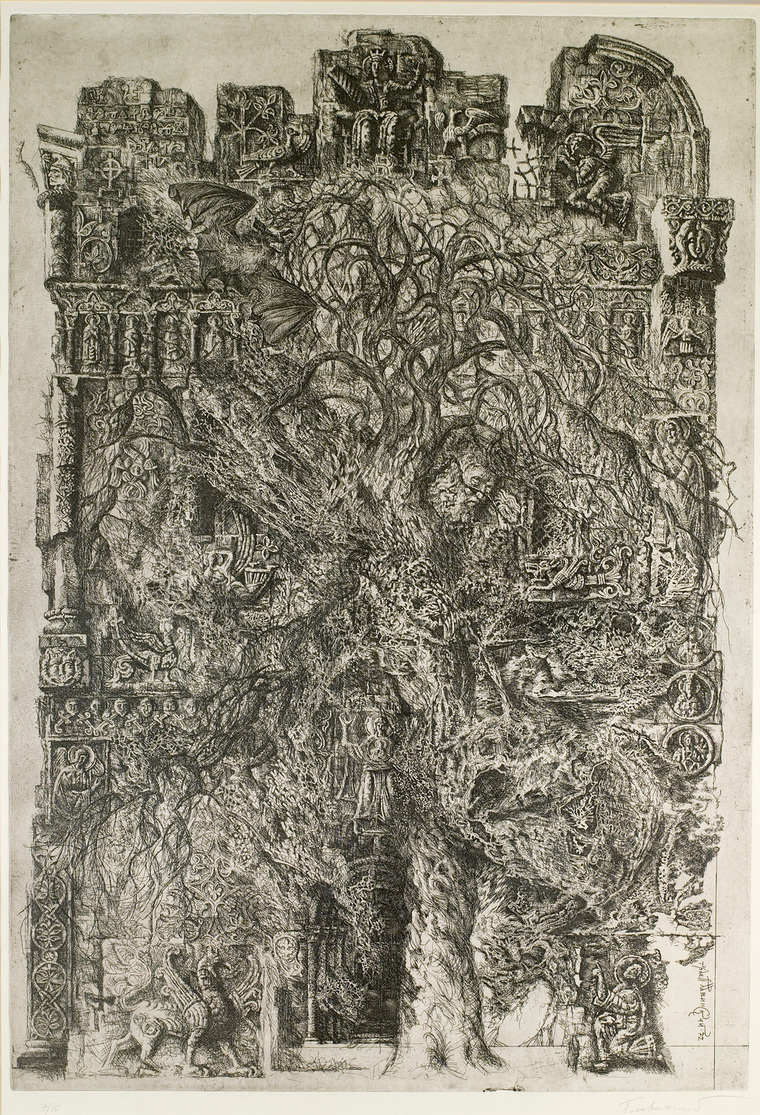
Dmitry Plavinsky is an artist-researcher, an artist-archeologist, an artist-philosopher. "The solitary genius", constantly knowing the infinity of layers of time ... He said: "I am motivated by the theme of being". One of the main representatives of Soviet nonconformism, Plavinsky was far from analysing his contemporary world. He was concerned with the eternal questions of culture, history, literature, music, and the artist embodied his reflections in works of art.
In the early 1960's, Plavinsky created abstract compositions with "Italian gesso texture masses" on the boards. Having done an incredible "Book of Grasses" in 1963, consisting of drawings with a pen and plant monotypes, Plavinsky declared himself as a fine draftsman. In this series, many ideas have also been formed, to which the master will be faithful all his life. Contemplation of again and again reviving natural forms, meditative reasoning about the eternal.
Over the years, Plavinsky's works become more and more complicated: the variety of textures, the complexity of technology, the introduction into the body of a picture of various elements – from fallen leaves and dried flowers to fish skeletons, from crosses to antique decorative accessories (it remains unclear whether they are real or made of tempera and gypsum?); and thematically – unhurried speaking of eternal questions about time, life and death, creation of synthesis of beauty and greatness of the past. The artist argues: "Art is a delicate, painful flower that grew on the ruins of the titanic, long-extinct cultures of mankind. I can describe the poisonous-attractive force emanating from this flower, recogniыe it in the sea of its kind, but I can not penetrate into its essence. This is a mystery, the touch to which bears the death of the creator" (From the project of Georgy Kizevalter and Vadim Zakharov "On the workshops ", 1982).
The painting "Blue Landscape" is an example of the existing work of a young artist. Plavinsky at that moment is 33 years old, but both philosophy and technology are already formed, and in the future they will develop only in detail. Here you can observe many attributes of his art: an aspiring to three-dimensional texture, "fashioned" from plaster with tempera folds, decorative details. The plot itself is a metaphor. The author depicts the landscape in the form of an unfolded ancient Bible: the leather binding wrinkled from old age, the pages were twisted and darkened. The folio is decorated with metal patterned corners, and the embroidered thin braid-tab ends with a small cross. All of the above abundance is made by hand, no collages and assemblages. In the interpretation of artistic symbols, the image of the sacred book with the cross on it embodies faith. And fragments of the text in the Old Slavonic language explain to us that (as often in the works of Plavinsky), it is here specifically about Orthodoxy. The blue color, denoted in the title, in Christianity symboliыes the heavenly power, the obedience of God's will and humility – all that is given to us in the ancient book. The "blue landscape" is a metaphor for the fate and salvation of mankind. V





